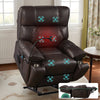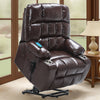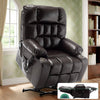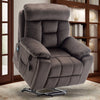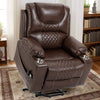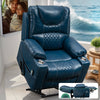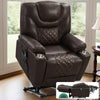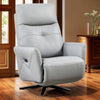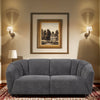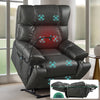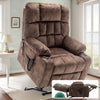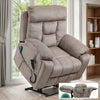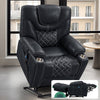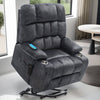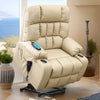The Importance of Ease of Movement for the Elderly
How Lay Flat Recliner Chairs Facilitate Movement
Lay flat recliner chairs are a game-changer for elderly mobility. These chairs offer smooth transitions from sitting to laying positions. This feature is crucial for those with limited strength or joint pain. The chairs provide support during movement, reducing strain on the body. They allow users to adjust their position with minimal effort. This ease of movement helps maintain independence in daily activities. Lay flat recliners also promote better circulation and comfort. They can be a safe spot for naps or overnight sleep if needed. Overall, these chairs make movement less daunting for seniors.

The Role of Comfort in Maintaining Mobility
Comfort plays a vital role in encouraging seniors to stay active. Lay flat recliner chairs offer plush support that eases body aches. This comfort can motivate seniors to move more often. When sitting is pleasant, getting up becomes less of a chore. Comfortable seating also reduces the risk of pressure sores from long periods of sitting. It supports good posture, which is key for pain-free movement. The ability to adjust positions easily adds to overall comfort. This flexibility can help seniors find relief from various aches and pains. Comfort in seating can lead to more confidence in movement throughout the day.
Safety Considerations for Elderly Chair Lifts
Safety is paramount when it comes to elderly chair lifts. These devices must have sturdy construction to support the user's weight. Non-slip surfaces are essential to prevent accidents during transfers. Emergency stop buttons should be easily accessible. The lift mechanism needs to operate smoothly to avoid jerky movements. Regular maintenance checks are crucial to ensure continued safe operation. Some models come with seat belts for added security. Clear instructions for use should be provided to caregivers and users. It's important to choose a lift that fits the user's specific needs and abilities. Proper training on how to use the lift safely is also vital.
Assessing the Impact of Elderly Chair Lifts on Quality of Life
Improving Accessibility in the Home
Elderly chair lifts greatly enhance home accessibility. They allow seniors to navigate stairs with ease, opening up all areas of their home. This increased access reduces the risk of falls on stairs. It also helps seniors maintain their independence longer. Chair lifts can be installed on various staircase types, from straight to curved. They take up minimal space, preserving the home's appearance. Some models can be folded when not in use to save even more space. With a chair lift, seniors can carry items safely up and down stairs. This freedom of movement contributes to a more active and fulfilling lifestyle at home.

The Emotional Benefits of Increased Independence
The emotional impact of increased independence is profound for seniors. Chair lifts allow them to move freely in their homes without relying on others. This self-reliance boosts confidence and self-esteem. It reduces feelings of being a burden to family members. The ability to access all areas of the home can lift spirits and reduce isolation. Seniors can maintain their daily routines and social connections more easily. This independence often leads to improved mental health and overall well-being. It can also reduce stress for both seniors and their caregivers. The sense of control over one's environment is empowering and uplifting.
Case Studies: Real-Life Stories of Improved Mobility
Real-life stories highlight the positive impact of elderly chair lifts. One case involves Mary, 78, who regained access to her upstairs bedroom. She no longer fears falling on the stairs and sleeps better in her own bed. Another story features John, 82, who can now enjoy his basement workshop again. The chair lift allows him to pursue his hobby safely. Sarah, 75, shares how her chair lift lets her visit her grandchildren upstairs. These personal accounts show how chair lifts restore freedom and joy to daily life. They demonstrate the practical and emotional benefits of improved mobility. Each story underscores the life-changing impact of this technology for seniors.
Strategies for Selecting the Right Elderly Chair Lift
Evaluating the Features of Top-Rated Recliner Chairs
When choosing a recliner chair, several key features should be considered. Look for chairs with smooth lifting mechanisms that are easy to operate. The chair should have a sturdy frame and weight capacity suitable for the user. Comfort features like padding and adjustable headrests are important. Some chairs offer heat and massage functions for added comfort. Consider the fabric type – it should be durable and easy to clean. The size of the chair should fit both the user and the room space. Look for chairs with battery backup in case of power outages. Remote controls should be simple to use with large, clear buttons. It's also helpful to choose a chair with a warranty for peace of mind.

Understanding the Installation Process for Elderly Lifts
Installing an elderly lift requires careful planning and execution. The process usually begins with a home assessment by a professional. They will measure the staircase and determine the best lift model. The installation team will then prepare the staircase, which may involve minor modifications. The track for the lift is securely attached to the stairs, not the wall. This ensures stability and minimizes damage to the home. The chair or platform is then attached to the track. The power supply is connected, and safety features are tested. The entire process typically takes a few hours to a day, depending on the staircase. After installation, the team will provide thorough instructions on lift operation and maintenance.
Future Trends in Elderly Chair Lift Technology
The future of elderly chair lift technology looks promising. We can expect to see more smart features integrated into lifts. This might include voice-activated controls and smartphone integration. Improved battery technology could lead to longer-lasting, cordless options. Design innovations may result in more compact and aesthetically pleasing lifts. Advanced sensors could enhance safety by detecting obstacles or user presence. We might see lifts that can adjust to different user weights automatically. Eco-friendly materials and energy-efficient motors could become standard. Virtual reality could be used for user training and lift customization. As technology advances, these lifts will likely become more affordable and accessible to more seniors.








